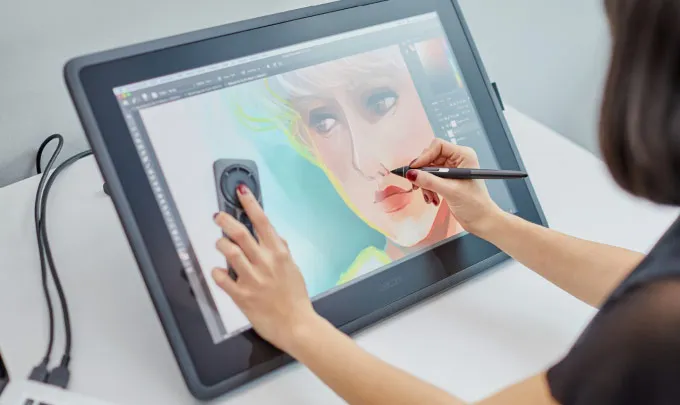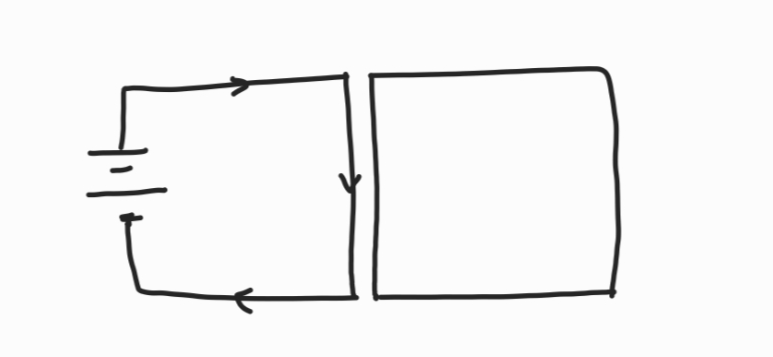Wacom: how does it work?
Shreeka Thangarasu
If you've ever watched any animated show or movie, chances are you've probably come across artwork drawn on a Wacom digitiser. If the words "Wacom digitiser" mean nothing to you, don't worry! I'll explain it.
At first glance you might think it's just a tablet. And you wouldn't be entirely wrong—a digitiser is really just a fancy word for a drawing/graphics tablet. What makes them different from say, an iPad or a Tab, is the purpose and precision they offer for digital art. Unlike regular tablets, which are designed for general use, digitisers are built specifically for artists and designers. Wacom is a brand which offers digitisers for commercial and recreational use, alongside companies such as XPPen and Huion. Together, they're what the drawing community likes to call the 'Big Three.' (Think of them like the digitiser version of Naruto, Bleach and One Piece).
Wacom in specific is known for it's its uniquely good technology which allows for crazy precision, tons of pressure sensitivity settings, and the best part: you don't even need to charge them!. They're so good in fact that the patent was bought by Samsung and is now used in all their SPen's. If you ever need a new pen for your Tab, just buy a Wacom one! They work all the same.
So, what makes them so good?
To answer that, first we have to answer the question: what makes them, well, anything? How do they work?
The pen is arguably the most important and interesting part, so we'll start there. If you were to dissect your SPen or Wacom pen (though, I wouldn't recommend you do), the first thing you'd see is a copper coil (or a solenoid for anyone looking to get technical).
Therein lies the magic.
Well, not magic actually—magnets! Electromagnets to be specific.
A moving charge is known as a current, and when multiple charges move (like in a wire or coil), their collective movement constitutes an electric current, which also generates a magnetic field around the conductor (in this case, the copper).
Now imagine a circuit with moving current. This moving current will produce a magnetic field.
Now, split the circuit in two.
Go ahead an add some conductors into the mix.
We know a moving charge will eventually induce a magnetic field, but did you know that the second conductor in circuit 2 would then experience a current from circuit 1's magnetic field?
If you didn't, don't worry. Here's how it works (simplified, of course):
1. The conductor (copper) intersects the magnetic field generated by circuit 1.
2. When a conductor moves through a magnetic field, or when the magnetic field changes with time, an electromotive force (emf) is induced in the conductor. This process creates magnetic flux linkage.
3. To induce a continuous emf, the magnetic field needs to change consistently (magnetic flux). This is where alternating current (AC) comes in. Unlike direct current (DC), which flows in one direction, AC periodically reverses direction, causing the magnetic field to increase, decrease, and switch polarity over time. This continuous fluctuation ensures that the field is always changing, which is necessary to keep inducing an emf in the second conductor.
4. This induced emf causes charges to move within the second conductor, generating a current.
Essentially, circuit 1’s changing magnetic field is what drives the current in circuit 2.
This interaction between the two circuits is called mutual induction, a concept used beyond just Wacom digitisers. Things like transformers (which I guarantee you own if you have a power box in your house), wireless chargers (yes, the one on the back of your phone), and even trains use mutual induction to work.
But that's going off topic. Now, let's say circuit 1 was a tablet, and circuit 2 was a pen.
Starting to look familiar?
When the Pen meets the Tablet, it's inducing an emf inside itself to complete its circuit. When this circuit is complete, it sends a signal to the tablet to start 'drawing'. For this to work though, the tablet needs to constantly be switching between two nodes in order to mimick an AC current, allowing for constant magnetic flux linkage and hence an induced emf.
And there you have it! Wacom's secrets, out in the air.
Just kidding, all of this can be found on Wacom's official website under their EMR section, (electromagnetic resonance), a term they coined for their pen tech. Here's what they have to say about it if my explanation wasn't simplified enough:
The pen is powered by the electro-magnetic field that is generated by the EMR sensor under the display. That allows for a cordless and battery-free pen with a high degree of freedom in both usage and pen design, such as the one which can be easily stored in a smartphone.
My explanation is, of course, insanely oversimplified. But if I were to go into how they detect tilt or pressure, I think we'd be here all day. What's important, and what I hope readers take away from all of this, is how intertwined art and tech can be.
Science exists for art and art for science. Too often I see arguments on which is better, but tech made by engineers at Wacom for artists, hopefully introduces a new idea into that argument, which is: who cares! Enjoy what you enjoy! Rather than divide communities over menial things like art and science, how about we embrace their synergy instead?
Wacom’s pens and tablets serve as a testament to how art and science can work hand in hand, enabling artists to explore new horizons and push boundaries. The next time you use a Wacom tablet, remember, you’re not just using a piece of technology; you’re wielding a fusion of art and science that enhances your creative journey.
Sources:
- https://www.youtube.com/watch?v=Vv668I4LEdg
Image sources:
- Wacom promo picture: https://www.wacom.com/en-us
- Wacom pen dissected: https://blog.tabletpc.com.au/2013/07/19/how-does-the-wacom-tablet-pc-pen-work/
- All other diagrams drawn by me (using my SPen of course :))









Comments
Post a Comment